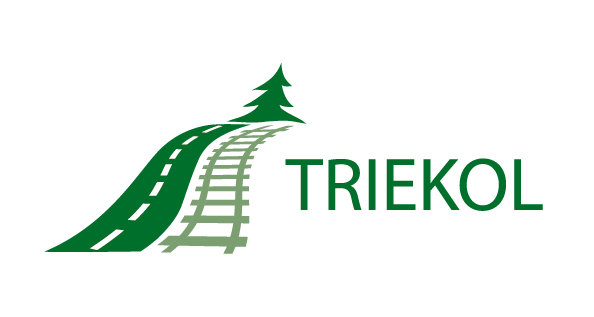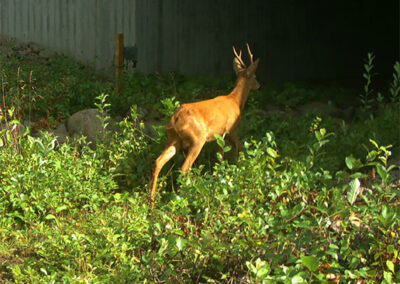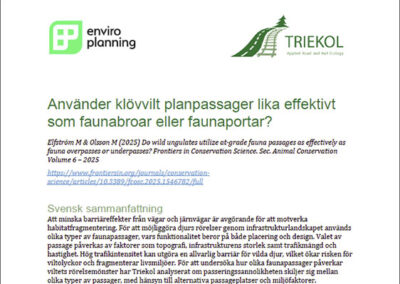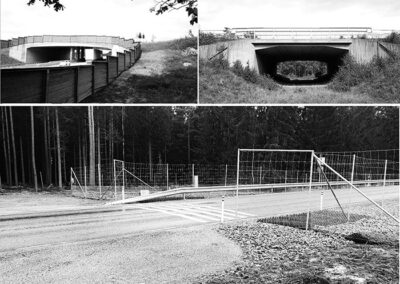Page not available in Swedish.
Background
New measures are needed to prevent both wildlife-vehicle collisions and barrier effects. At grade fauna passages (in Swedish VGU terminology: “faunapassage i plan”) may provide a cost-efficient alternative to under- and overpasses, even if only for larger species and under certain conditions.
The idea with the at grade fauna passage is that the animal movement across the road should be directed to a certain location, where the animal is detected by an animal detection system and that the drivers are alerted for animals on or near the road.
At-grade fauna passages combine three main components:
An opening in the fence, constructed to guide animals over the road.
An animal detection system.
A system for alerting drivers of the presence of animals
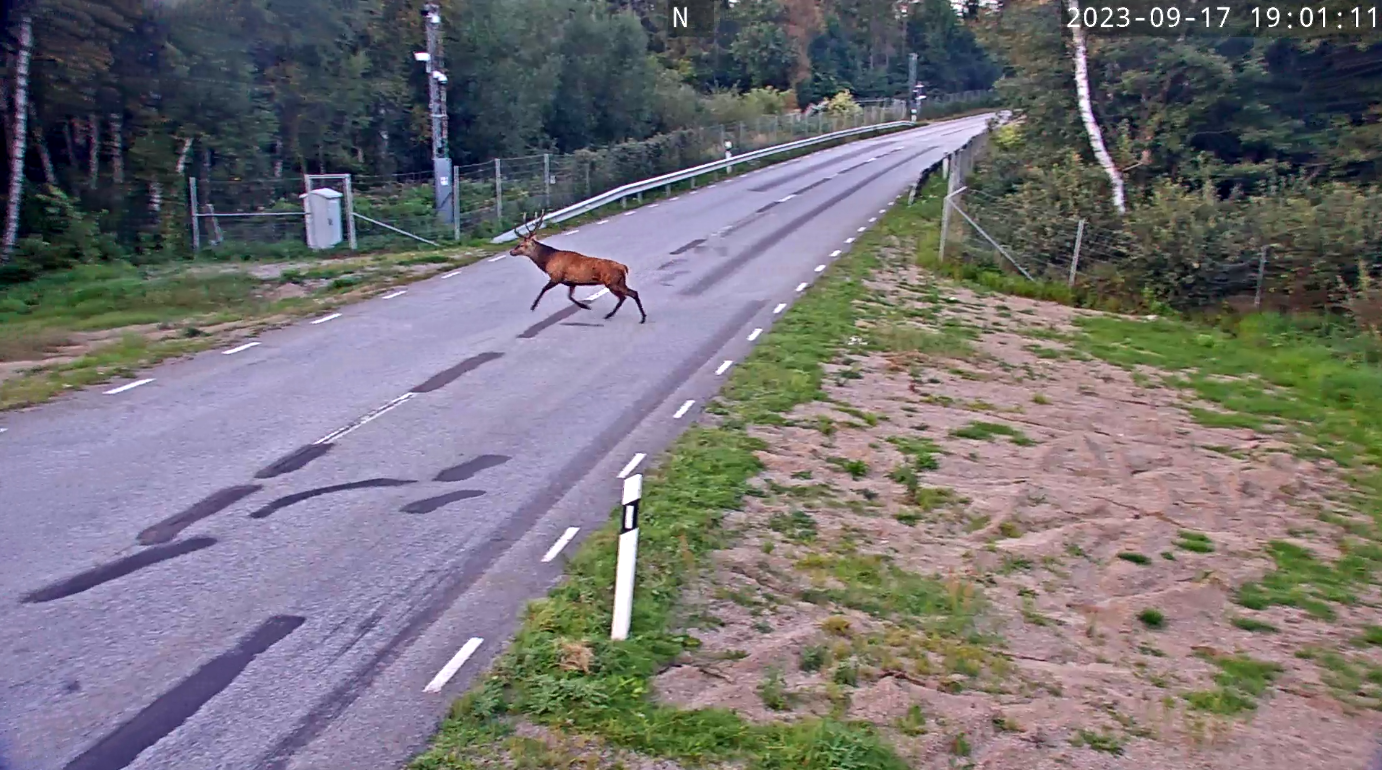
A red deer detected by the animal detection system. Photo: Swedish Transport Administration.
At grade fauna passages are built in several countries, but so far in a lower number compared to fauna bridges and fauna underpasses. The results from available studies are contradictory. Under what specific circumstances may this this type of wildlife passage be made functional for wildlife and drivers? The performance of at grade fauna passages depends on both animal and human behavior and must be measured in terms of both wildlife connectivity and traffic safety. Above that, there is a technical component that communicates the presence of wildlife to the driver. Thus, several questions remain to be answered. To what degree does the functionality depend on technical details of the different components in the system? How should the driver be informed about the detected animal?
Despite the uncertainties, for economic reasons there is a big interest in constructing at grade fauna passages, and if made functional they can be used on many roads with low to intermediate traffic flow. Therefore, it is crucial that the performance of new at grade fauna passages are monitored and that the results are published.
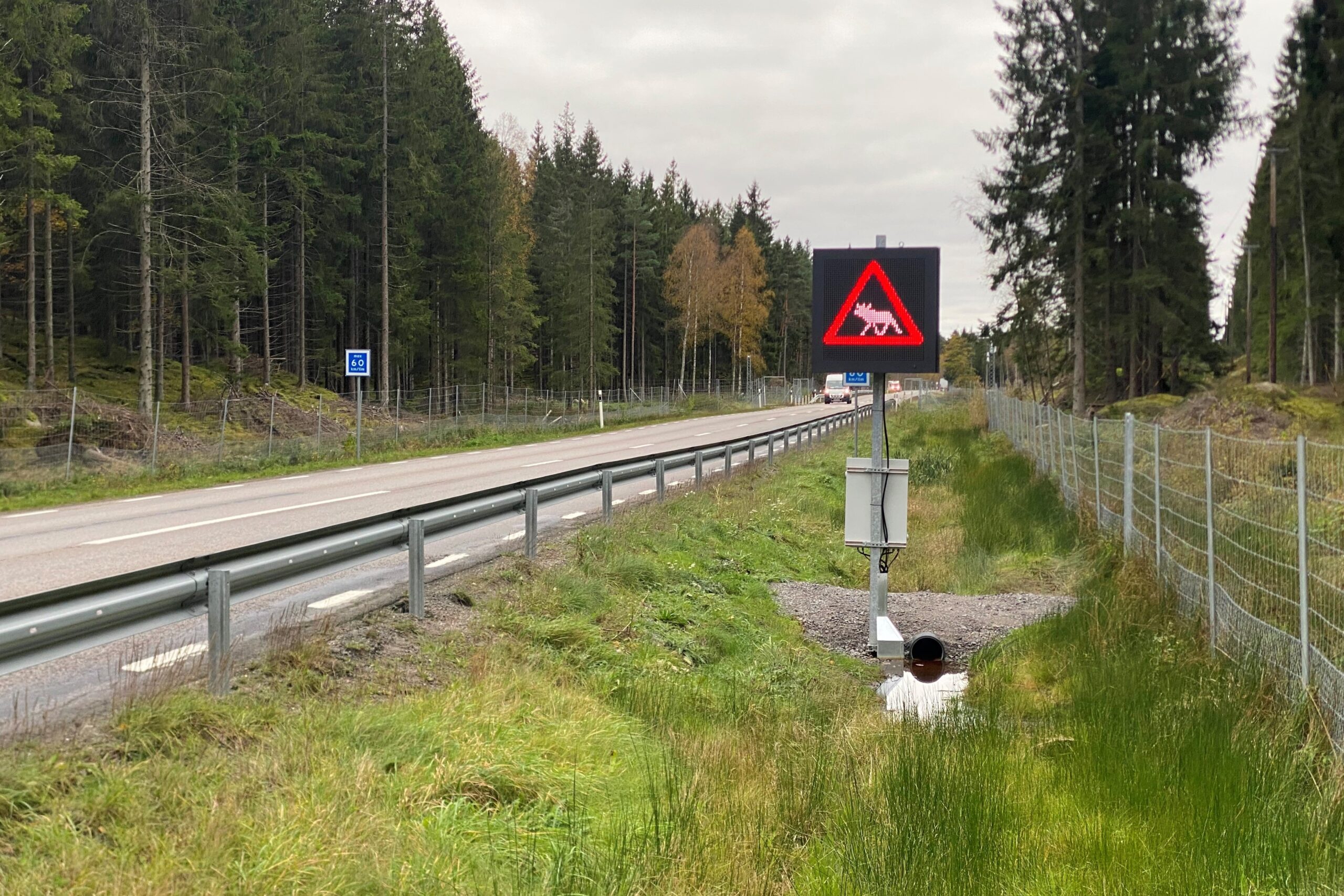
A variable sign is activated to warn drivers as wildlife enters the at-grade fauna passage. Photo: Mattias Olsson.
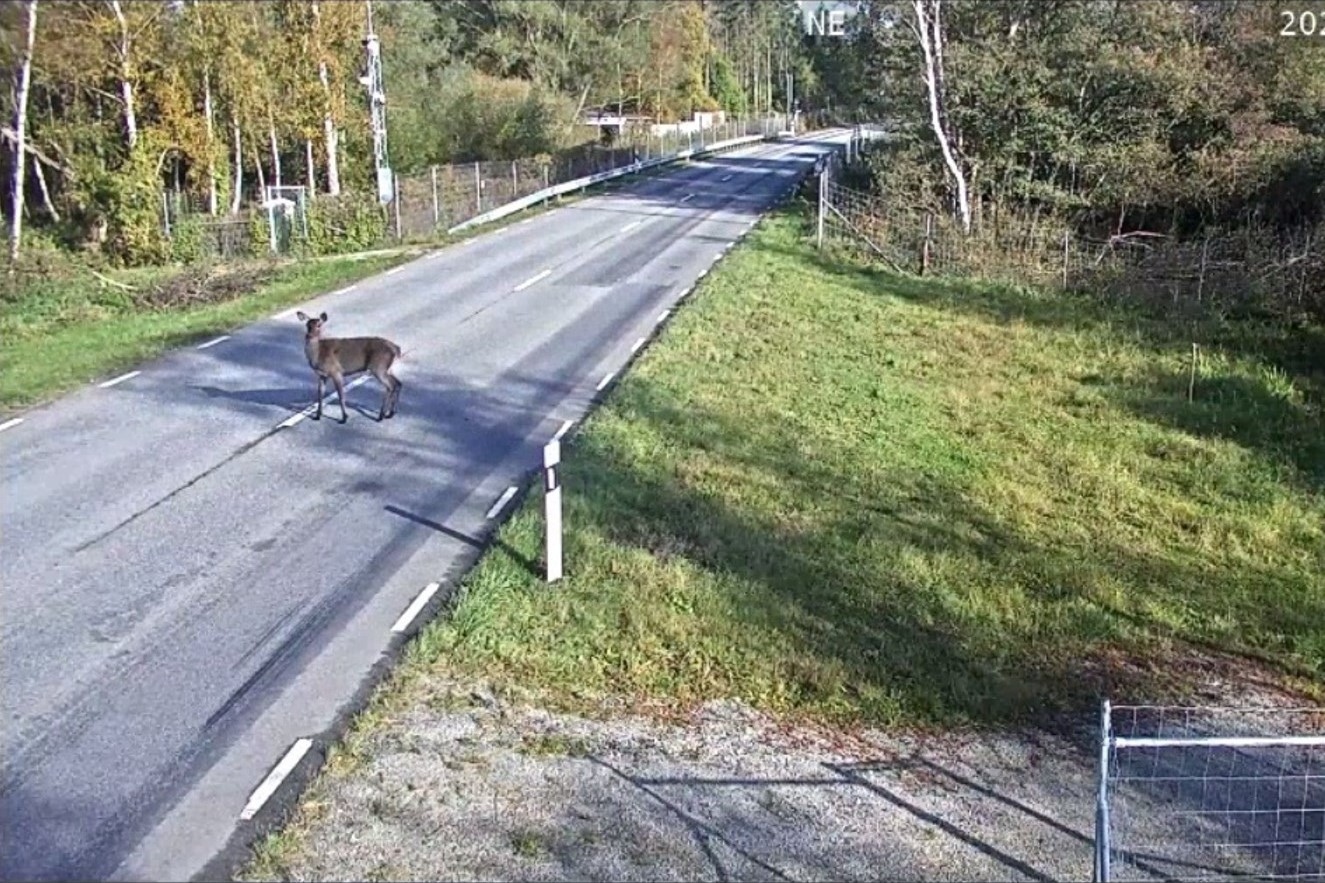
A red deer detected by the animal detection system. Photo: Swedish Transport Administration.
Are at-grade fauna passages safe for wildlife and safe for drivers?
The Swedish Transport Administration has formulated an overall goal for at-grade fauna passages with wildlife detection and warning systems: An at grade fauna passage with wildlife detection system should be a safe fauna passage. Safe for animals and safe for drivers.
So, what is a safe fauna passage for drivers and wildlife? What do we need to study and how shall the studies be designed? Here we formulate specific topics to study to rigorously validate these targets. These targets apply for both human and wildlife safety and wildlife use of the wildlife crossing structure.
To study these topics, the technical equipment available for research must cover movements of animals in the entire fauna passage, both in the side areas of the infrastructure and across the infrastructure. The traffic safety aspects must be studied at the road since the success of at-grade fauna passages rely on the outcome of the interactions between wildlife and traffic.
Measurable goals for a target-oriented approach to evaluation at-grade passages were formulated in december 2023.
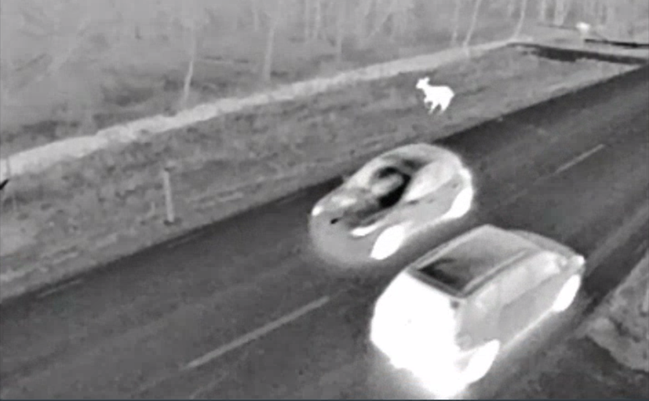
A red deer runs quickly through the fauna passage, while two cars have slowed down to avoid a collision. Photo from the Swedish Transport Agency’s thermal cameras.
Activities
In this subproject of Triekol we are monitoring the performance of at grade fauna passages in terms of wildlife use and connectivity between roadsides, and effect on wildlife accidents and driver behavior. Specifically, we are studying the safety aspects both for drivers and wildlife.
Field methods include studies of animal movements and behavior near and through the crossing by using filmed sequences from heat cameras covering the whole area of the fauna passage.
Output
This subproject gives insights in the efficacy of at grade fauna passages in connecting wildlife between roadsides. Efficacy is separated between species and categories of animals (age and gender) to put light on population level impacts.
The results will contribute to cost-efficiency comparisons between level crossings and over-/underpasses.
We are evaluating the reduction of wildlife-accidents at the mitigated sections.
Studies are designed to meet the targets of safety aspects of at-grade fauna passages. Specific guidelines are formulated for future studies to follow.
Study sites
Four at-grade fauna passages have been studied:
Sjödiken, road 108, north of Svedala
Detection and warning system from November 2019.
Koberg, at national road 42
Opened for animals from December 2019, detection and warning system from october 2023.
Holmgärdet, at national road 42
Opened for animals from July 2020, detection and warning system from october 2023.
Haraldsmåla, at road E22
Detection and warning system.
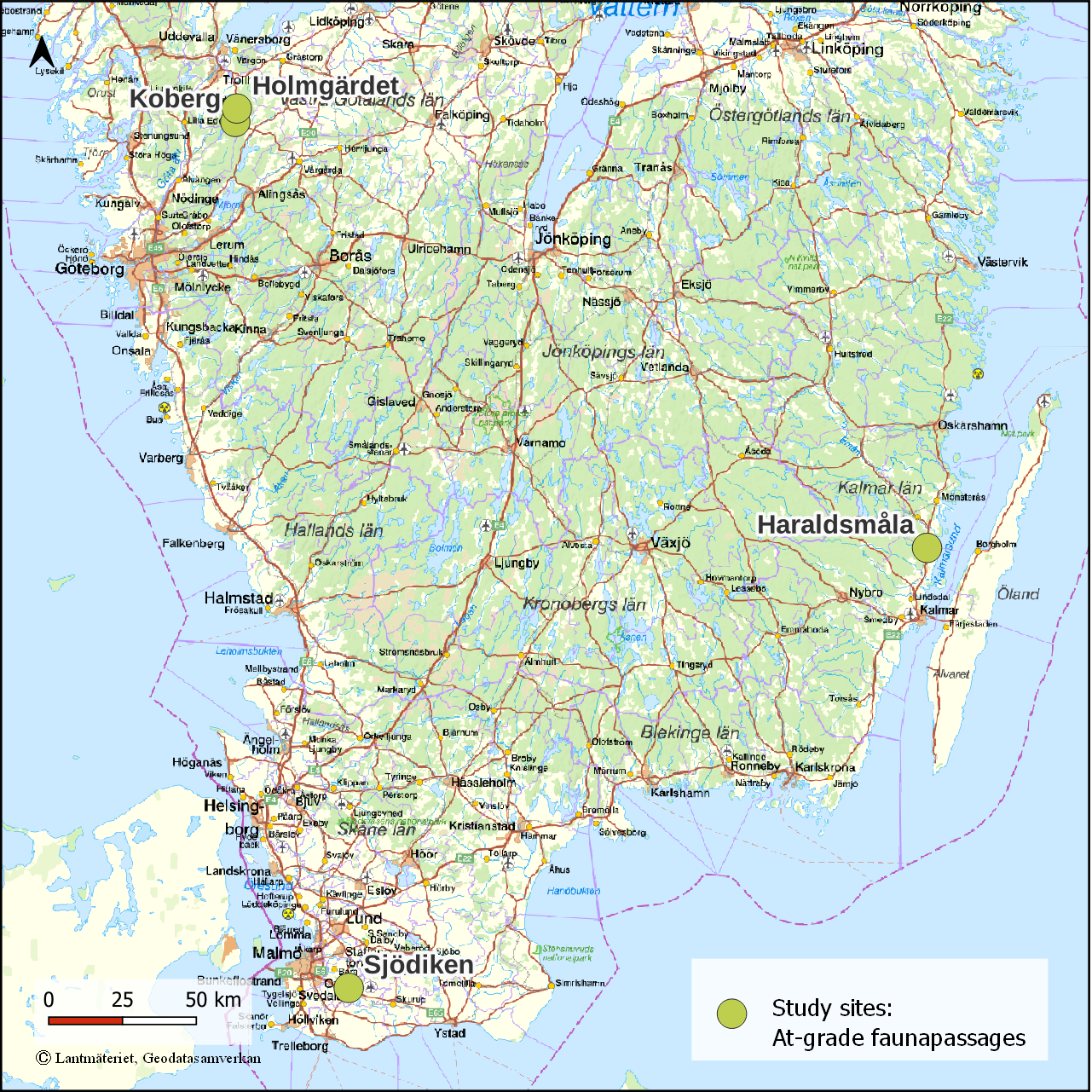
Site 1: Sjödiken
The animal detection and warning system supplied by the Transport Administration consists of three thermal imaging cameras mounted on a 6 m high mast. One mast on each side of the road. The system produces thermal imaging videos which cover animal movements across the whole fauna passage. Thus, we are following animals during the whole crossing process, also during the most important stage at the road surface where interactions with vehicles occur. Milestone (www.milestonesys.com) is used as a technical platform for video analysis and activation of the traffic warning system. Data are retrieved by a remote connection to the site where the alarms are logged and can be viewed.
Several research questions are explored, among those:
How does the presence of traffic affect the crossing success of an individual (individual level)?
- Does the traffic volume affect crossing success?
- Does the traffic volume influence the time it takes for an individual to cross?
- Does the presence of traffic influence the number of attempts to cross?
How does the presence of traffic affect the crossing rate of a species (on the event level)?
- Does the traffic volume influence the likelihood for ungulates to approach the passage?
- Does group size change or influence the crossing success?
- Is there a leader/follower effect?
- Is the activity at the passage influenced by time of day or season?
- Does the direction of crossing change between seasons/throughout the year?
Video from Sjödiken
Here you can see some examples of video footage gathered at the at-grade fauna passage Sjödiken. The warning system consists of multiple cameras, including infrared and regular. Some cameras are static while others track movement within the passage.
The first two videos show a red deer stag using the passage from two different perspectives.
The third video shows a group of four red deer, two hinds and two juveniles.
Site 2-4: Koberg, Holmgärdet and Haraldsmåla
Autocameras (standard trail cameras) were used during 2021-2022 at these four sites to monitor animal use of the at-grade fauna passages and its nearest surroundings. Data are retrieved from monitoring studies conducted within the respective investment project.
Data are used to compare ungulate use of at grade fauna passages with fauna bridges and fauna underpasses. The results will be summarized in a report for practitioners, where the international knowledge level regarding efficiency of level crossings will be described and best recommendations for construction will be given.
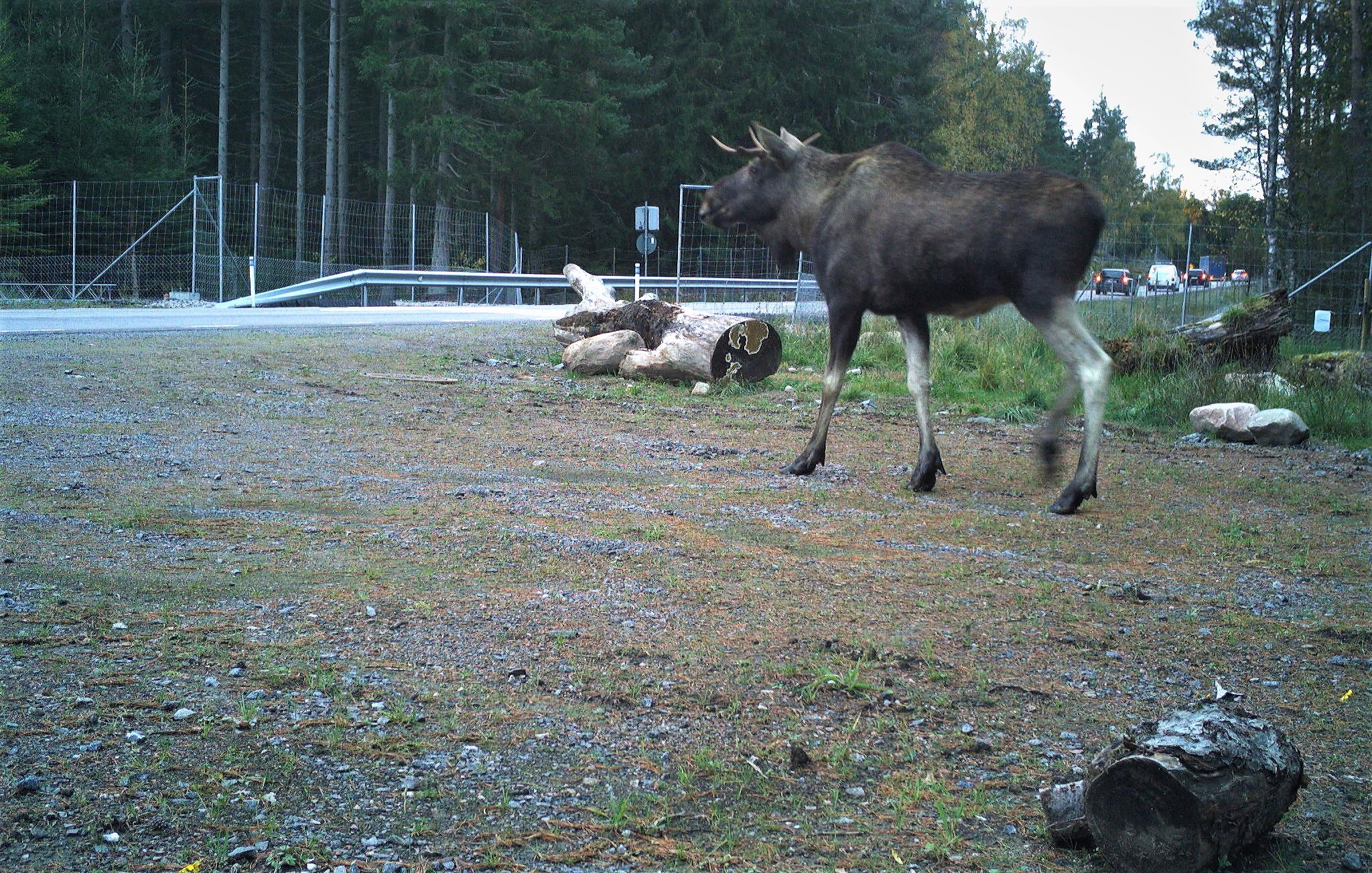
A moose detected by the autocameras at Koberg. Photo: Swedish Transport Administration.
Publikationer och presentationer
The subproject Level crossings and wildlife warning systems has resulted in:
Contact for the subproject
Mattias Olsson
Forskare och projektledare, EnviroPlanning AB
mattias.olsson@enviroplanning.se
+46 (0) 739-47 11 47
